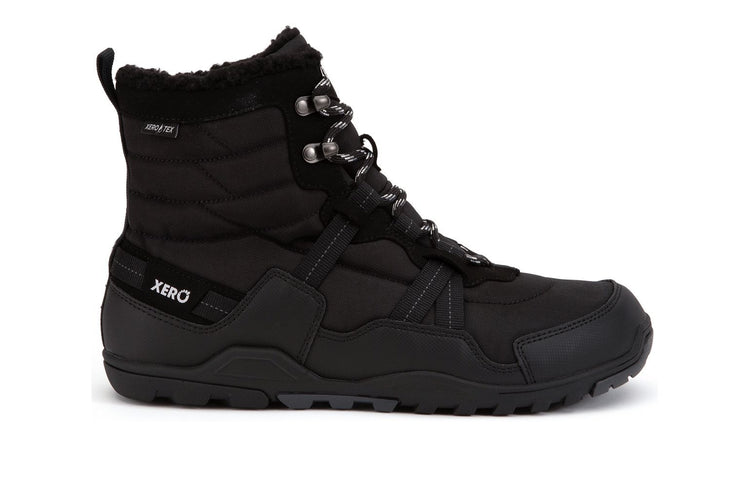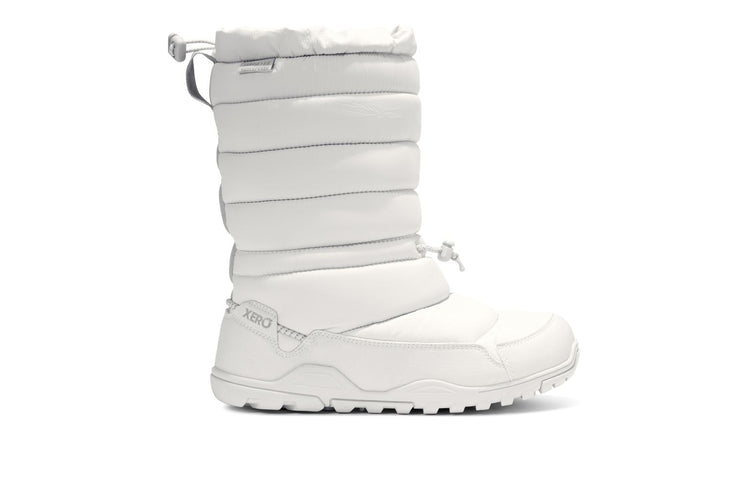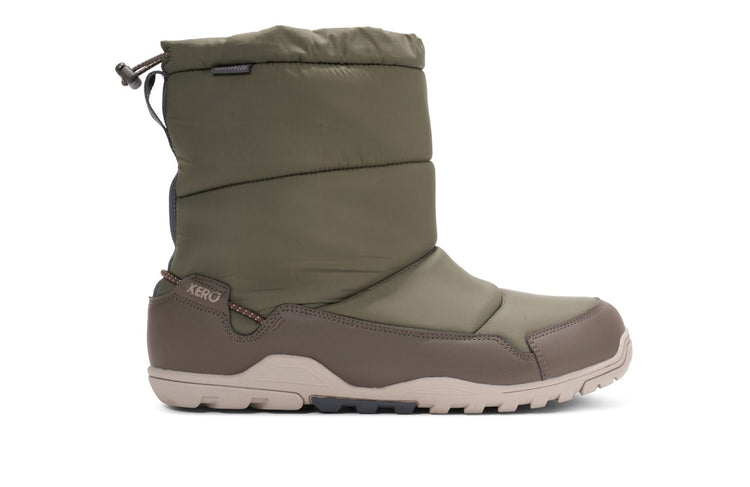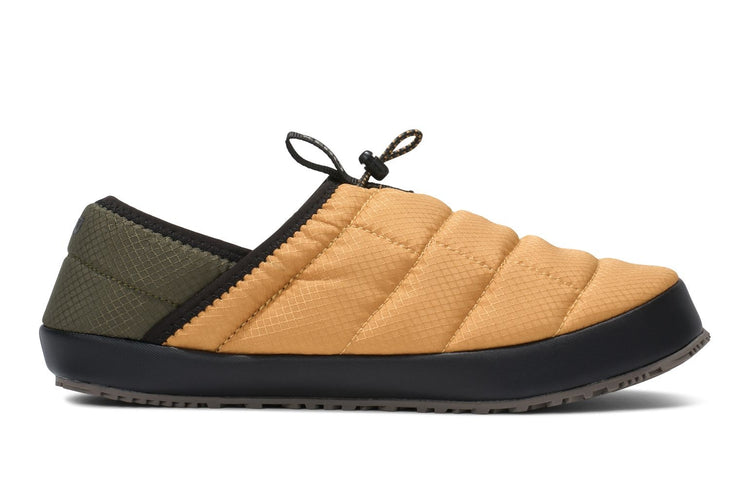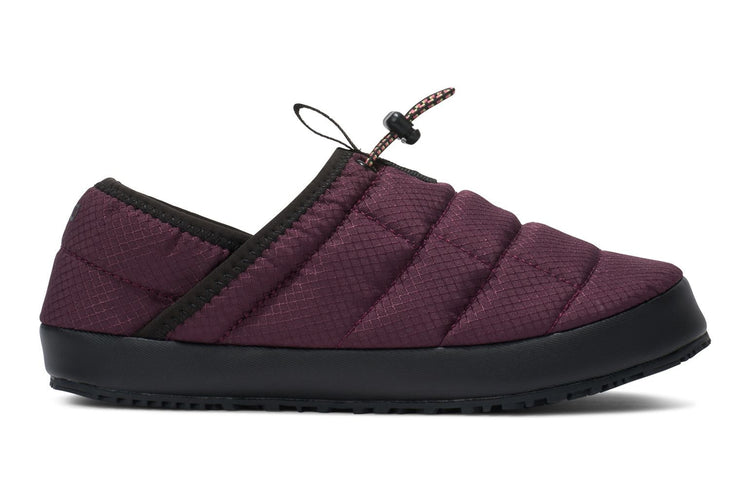latest News
Barefoot Sandals - the best minimalist running shoes
Every now and then, someone will smugly say to me:"Barefoot Sandals is an oxymoron. If you're barefoot, you're not wearing sandals, and if you're wearing sandals, you're not barefoot!"Yes, technically, that's true. Barefoot is barefoot and shod is shod.And, I'll admit, I'm normally a stickler for grammar. I hate when people say "very unique" (something can't be VERY one-of-a-kind), and don't even get me started on "a whole nother" ("nother" isn't a word! You mean "another whole").But for "barefoot sandals" or barefoot shoes or even bare feet shoes, I'm willing to be a bit more lax, and not just because I'm in the business of making huarache sandals.It's simpler than that.In this case, there's not really much lost when you remove the "implied word": -style.That is, what people would say instead of "barefoot sandals" if they were being more accurate is "barefoot-style sandals," or "barefoot-style shoes," the implication being that this type of footwear is similar in some way to being barefoot.Now the key element to that sentence is "similar in some way," and I'm sure I don't need to tell you that many shoes that advertise themselves as barefoot running shoes are about as similar to barefoot as a pair of stilts (I should make a spoof commercial about barefoot stilts!).Some manufacturers say that their shoes let your foot move as if you're barefoot, or run with natural form (usually meaning forefoot or midfoot striking). Others say that you can feel the ground as if you're barefoot.It won't come as any surprise that I think Xero Shoes does this better than any other product. After all, what could let your foot move more naturally than having nothing on your foot? And what could give you more ground-feel than just a bit of rubber (oh, I know, LESS rubber... but that's a story for another post).One of the first Xero Shoes customers said it best when he came back from his first run, all giddy, "It's just like being barefoot... if they covered the earth in 4mm of rubber!"So, cut some slack to those of us who use phrases like "barefoot sandals" or "barefoot shoes." Let the implied meaning come through. But do demand that those who use the phrase can back it up with a product that lives up to the claim.
Barefoot Running Sandals vs. Running Shoes
A barefoot running vs. running shoes "infographic" I'm get all geeky over well-presented information, and the graphic about barefoot running and regular running shoes from XRayTechnicianSchoools.net is a pleasure. Whenever someone says to me "Barefoot running can cause injuries" I remind them of the fact in 1/3 of the infographic: 90% (I heard 80%) of marathoners get injured each year. When people ask me about wearing barefoot running shoes in the winter, I remind them of that big squiggly time line showing that for hundreds of thousands of years, we would walk and run barefoot, without shoes, in some pretty cold places (in other words, your body, given time, will acclimate). And, I agree that being barefoot is not appropriate all the time... like when you want to get into a restaurant. Hence the value of our high-tech upgrade on the Tarahumara huarache-inspired shoes and sandals, where you still get a great barefoot feel, but can get into restaurants. I also got a great flashback from the 1974 timeline: I vividly remember getting my first pair of Nike Waffle Trainers. What's funny is that most people remember that it allowed you to land on your heel. I remember that it had such a large amount of "toe spring" (a curve up from the ball of your foot to your toes) that it kept me on my toes! (I was, and still am, a sprinter, so I don't spend much time running on my heels). AMAZING to see that barefoot running shoes are a $1.7 billion industry, in part because the market has grown MUCH faster than anyone imagined it would. But also because most of the barefoot running shoes are SO expensive. Minimalist shoes clearly doesn't mean minimalist prices, it seems ;-) And, of course, I agree about the best way to start barefoot running (there's no rush to make the transition out of running shoes and over to barefoot) Created by: X Ray Technician Schools The content of this post does not constitute and is not intended to be a substitute for professional medical advice, diagnosis or treatment. Always seek the advice of a physician or other qualified health provider with any questions or concerns you may have about your health or a medical condition.
The little lie of barefoot running
As the barefoot running boom continues to explode, it’s important that we debunk the mythology that’s sprung up and face some facts. And perhaps the most obvious fact is this: If you run with anything between your skin and the ground, you are not barefoot runner. Let me say that again. If you wear Vibram Fivefingers, New Balance Minimus, Merrell Trail Gloves, Altra Adams, Vivobarefoot shoes, Newtons, Inov8 shoes, even our Invisible Shoes huaraches running sandals, you are not a barefoot runner. I don’t care if your previous shoes were padded stilts and your new shoes are a “zero-drop” natural movement minimalist shoe, if you’ve got something on your feet you’re not barefoot running. Barefoot running means that you run in bare feet. Period. Now, don’t get me wrong, I’m not saying that if you’ve just spent $125 on your Vibram Bikilas you need to throw them away, or that if there’s a barefoot running Meetup you can’t be part of the cool clique. And I’m not saying everyone needs to be barefoot. And, clearly, I'm not saying "don't buy Xero Shoes" ;-) But it’s important that we differentiate actual barefoot running from minimalist running. Why? Because more often than some would like to admit, barefoot running and minimalist running do not produce the same results. The promise of barefoot running is that the sensations you get when your skin contacts the ground — often known as pain — teach you proper running form. That is, if you change your form to make the pain go away, you’ll have a more efficient, lighter, easier stride, and you’ll be able to run pain-free for life. Anything that you put on your feet reduces the amount of sensation you feel and can interfere with the feedback loop that barefoot running gives which produces those benefits. Again, I’m not saying that you don’t get feedback from minimalist shoes. You certainly get more than you do when you’ve got 2″ of padding in your Nike I Can’t Feel The Grounds. As the developer of Xero Shoes, I know hundreds of people who switched to our sandals, improved their barefoot running form, eliminated life-long aches and pains, and now enjoy running ultra-marathons. As one of our early customers put it, "Xero Shoes are just like being barefoot... if they covered the world in a thin layer of comfortable rubber." But, I’ve also met a LOT people who bought a pair of Vibrams or Merrells (or any other minimalist shoe), soon became injured, and now tell everyone they know that “barefoot running” is dangerous… and they’ve never run barefoot! I’ve been on a number of barefoot running panel discussions and, inevitably, there will be some number of doctors, physical therapists, podiatrists and other medical professionals who say, smugly, “Hey, stick with this barefoot running thing. All the people getting hurt by doing it are putting my kids through college!” Before they can finish chuckling, I fire back: Me: “You know, of course, that all you guys made the exact same joke 40 years ago when running shoes were invented, right? And you know that people who have no problems running barefoot — and ones who get cured of injuries by running barefoot — will not come to see you, right?” Them: “Uh…” Then I pull out the bigger guns: “And when a patient tells you they got hurt from barefoot running, did you ask if they were actually in bare feet? Did you check to see if they simply over-trained by doing too much, too soon? And, maybe most importantly, did you take a video of them running so you could analyze their form and see if they were simply using the same injury-producing mechanics they used when they wore shoes? Or did you see if they were trying to stay on their toes, putting extra strain on their calves and Achilles, because they have a mistaken ideas about proper barefoot form?” Them: “Uh…” Barefoot running is more than switching to a minimalist shoe. And it’s more than simply removing your shoes. Don’t believe me? Go to a barefoot running event, find the people in their minimalist shoes, and see which ones are still landing on their heels, as if they’re still in motion controlled running shoes. In fact, be on the lookout for runners who are actually barefoot doing the same thing! Some of us are either unable to feel those important form-changing sensations, or unable (without coaching) to actually make form changes in order to find a painless way of moving. For an example of this, check out Pete Larson's video of the recent NYC Barefoot Run. Most of the VFF wearers, and a handful of barefoot runners are still landing on their heels. (I was there and noticed the same thing, but I didn't have the brains to video tape it... so, Thanks, Pete!) Let’s wrap this up with a wish: If you’re one of those “barefoot” runners who has never run barefoot, I can’t encourage you enough to try it. Don’t think there’s some transition you need to go through before you’re “ready.” Ironically, the best advice I can give you is: Just Do It! Get on a good clean hard surface (a bike path is great, streets work too) and go for a run. Listen to your feet, if they hurt, try to move in some different way so that they don’t. And if you can’t figure out how, then stop and try again another day. Don’t think you need to build up callouses; none of us who successfully run barefoot have any (they’re another sign that you’re doing something wrong). If you can find a coach or some training, get some guidance. Report back here with what you discover. The goal is not to be barefoot all the time. The goal is to be flexible. To be able to run comfortably, easily, and enjoyably under any circumstance. To know when barefoot is the best option and when something under your feet is called for. I wear my Xero Shoes for all my walking, hiking, and getting into restaurants. I'm barefoot for a lot of my sprinting training. But, hey, I still wear running shoes, too… when I have to shovel a 2′ Colorado snowfall. The content of this post does not constitute and is not intended to be a substitute for professional medical advice, diagnosis or treatment. Always seek the advice of a physician or other qualified health provider with any questions or concerns you may have about your health or a medical condition.
5 Common Stride Missteps
Let us guess, you ditched the cushioned clodhoppers only to find a new host of issues to deal with. Blisters on the bottom of your feet? Sore hips? Calves aching so much you can’t walk? Soak in some Epsom Salt and give yourself a break. No one said changing a lifetime of running habits overnight would be easy. No matter what shoe (or lack thereof) you wear, if you don’t change your stride, it won’t matter. Not sure if you’re “doing it right?” Below are five common missteps to set your stride straight.Misstep #1 Incorrect Stride RateWhen it comes to running, we get into a groove and find a familiar, comfortable place. We expect things to feel a certain way. Traditionally, runners trod along at roughly 120 steps per minute. With a forefoot or mid-foot stride, you need to speed up your stride rate and shorten your steps to roughly 180 steps per minute.Initially, it will feel very strange and awkward, and you may need to do some game time internal persuasion to stay consistent. Stick with it and you will be surprised how quickly you become accustomed to your new stride (and the pain-free knees that accompany). Remember, forefoot/mid-foot striding in minimalist shoes requires stronger calves, Achilles, tendons, ligaments and bones - you will slow down initially, but as you strengthen so does your speed. Take your time and slowly work your mileage up.Misstep # 2 Over-stridingOver-striding jars the body and puts unnecessary strain on your ankles, knees and back. Watch your feet closely as you run. Do your feet land under your center of mass where they should or in front of your body? The closer they are to you, the better. It is also common for runners to kick their legs out in front, then land lightly on the forefoot, rather than keeping a normal stride.Think of it as a modest can can dance in running form. Why add the extra stride and expend extra energy without the payoff? Keep your stride short and land under your center of mass.Misstep #3 Pushing/Pulling Your StrideAre you taking off for a run only to find a nasty blister swelling on the ball of your foot afterwards? When you push off for your stride, or pull your foot back towards your body to complete your stride, you’re smearing your foot across the ground. All of that extra friction is sure to create an uncomfortable blister or two. Keep your stride light and eliminate the foot smear and you will avoid blisters.Misstep #4 Incorrect Placing and Lifting of the FeetAre you jamming your foot to the ground and using a heavy stride? Going lighter and minimalist not only includes your shoe but your stride as well. When you run, imagine you are sneaking up on an elk in the woods or running on hot coals. Place your forefoot or mid-foot on the ground, then quickly lift it back up. The faster you move, the better. Doing this will keep your stride light, fast, and put less strain on your body.Misstep #5 AsymmetryHave you experienced a blister or soreness on one foot, but not the other? Pain in only one shoulder? Stronger strain in the right Achilles but not the left? Your symmetry is off. This is easy to do but also easy to fix. If you consciously try to have your feet, legs and arms move symmetrically in the same way, you will find most of your problems cease immediately. This becomes more crucial at the end of the run when you are fatigued and your stride isn’t as precise, your arms aren’t as stiff. Strive to keep yourself strong and symmetrical to the last step.Of course, there is the granddaddy of all missteps – the heel strike. We hope that no one is shedding their shoes only to pound their heels into the pavement (ouch!) Be sure to take on a forefoot or mid-foot stride and let your heel gently touch the ground as you roll through your step.Have you done any of these? We know we have! If you’ve overcome any stride challenges, do share. Your experiences may help someone else out there.Feel the World!The content of this post does not constitute and is not intended to be a substitute for professional medical advice, diagnosis or treatment. Always seek the advice of a physician or other qualified health provider with any questions or concerns you may have about your health or a medical condition.
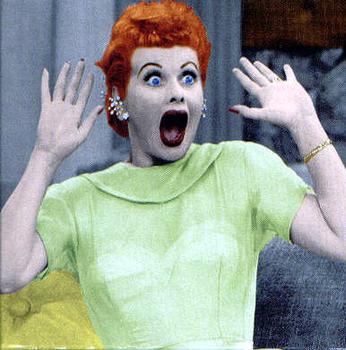
How NOT to start barefoot running
I was on a panel discussion about barefoot running a while back. At one point, someone in the audience asked, So how do I transition to barefoot running? NOTE -- even if you're not a runner, this story is still relevant and important for you... okay, back to the story... Before I could respond, a well-respected physical therapist suggested the following: “First, switch to a slightly lower-heeled shoe than what you have. Run in that for a few months. Then switch to a racing flat, maybe one day a week for a while… then add an extra day every month, until you can run in those. Then maybe try something like Vibrams on a soft surface, like grass in a park. Work up to being able to run on the grass… then try a soft dirt path. Eventually you may be able to run on hard surfaces, but don’t do that too often. And I don’t recommend being totally barefoot because you could step on something.” The only reason I didn’t interrupt him was that I was in shock! I had never heard anything so insane in my life. Until he he tossed out his next bit of barefoot running advice: “Expect to spend about 2 to 3 years making the transition. That’s how long I’ve been doing it and I’m still not there.” That's when my shock gave way to action, and I took off the politeness gloves. “Hold on,” I said, “this is completely upside down and wrong!” Danny Abshire from Newton jumped in as well, “Right, that’s backwards.” I’ll tell you what Danny and I proposed, instead, in just a moment. But first, let’s back up to the question that started it all. "How do you transition to barefoot running!?" The idea built into the question itself seems to make sense. If you’re wearing a motion-controlled shoe with a 3″ heel and a $400 orthotic, it seems logical that you need to slowly wean yourself from all that support. It seems clear that you would need to get comfortable in a lower and lower heel until you’re ready for barefoot. But as we've already seen in the previous days of this course, things are not always as they seem. Here’s the bottom line: There is nothing that “prepares” you for being barefoot. Nothing. Not “zero-drop” shoes (where your heel is at the same height as the ball of your foot). Not Vibrams. Not a thinner insole. Not even Xero Shoes (more about those in a second). Anything that you put on your feet will change either your stride and biomechanics, or the amount of sensation you’re feeling in your feet (or both) compared to being barefoot. So once you take off your shoes, or fully feel the ground, you’ll need to learn to move differently. Here’s where some people stop reading what I’m saying and respond with two arguments (to points I’m not making). First, they’ll say, “Oh, so you’re some sort of barefoot purist! Who are you to tell me what to wear or not wear?” To be clear, I’m not telling anyone what to wear and I’m not saying barefoot is the only way to be. Admittedly, the majority of my time I am in Xero Shoes, but not always (more about when I'm not, and when you shouldn't be in an upcoming lesson). This article is about the myth of “transitioning” to barefoot running, not about your footwear, or lack thereof. Secondly, people will say, “Yes, but switching to a racing flat or zero-drop shoe will give your Achilles time to stretch and strengthen, and that better prepares you for being barefoot.” To them I say, “Not always. And for almost everyone, your Achilles has more than enough stretch. And, even if it were true that you needed to stretch your Achilles, there’s a better way than spending 2-3 years to make that happen.” Keep in mind that the biggest reason for going totally barefoot is that feeling the ground with your skin gives you the most feedback about your form. Feedback that, if you attend to it, can inspire you to change your gait to something more efficient, easy, and natural. Running in Xero Shoes is, really, the same... if they covered everywhere you stepped in 4-6mm of flexible rubber. All the other shoes I've tested reduce the amount of ground sensation you feel so that you don't get the feedback you need to adjust your gait. I’ve seen hundreds of people in VFFs or racing flats who still heel strike or have some other gait pattern where they aren’t getting much if any extra “Achilles strengthening and stretching”. So, what’s the better way to “transition” that Danny and I chimed in with? Take off your shoes (or put on your Xero Shoes), find the hardest and smoothest surface you can find (like a bike path or street) and run. But only do it for about 200 yards. See how you feel the next day. You may be sore, you may be fine. If you’re sore, wait until you’re not. Then go try again, and add 100 or 200 yards. Repeat. I think of this as the “Shampoo method” of barefoot running. Instead of “Lather, Rinse, Repeat,” it’s run a little, rest, repeat (and run a little more). Keep in mind, there are two types of soreness. One is from using muscles you haven’t used in a while, or using them in a way you haven’t used in a while (if ever), or using them a bit more than usual. The other is from doing something wrong. Like doing way too much distance (which part of 200 yards was confusing to you?), or trying to stay on your toes without letting your heels ever touch the ground (Not necessary… land mid- or forefoot, but your heel can touch down. No need to do 200 yards of calf raises). In other words, a little soreness is probably normal. A lot of soreness is telling you to try something different. And this idea that you need to be on soft surfaces. Completely wrong. And wrong for the same reason that you don’t want to be in cushy running shoes. Give yourself a soft surface and the odds are good you’ll heel-strike. Plus, soft surfaces don’t give you the feedback you want, the kind that can help you quickly learn a new and better way to run. I’ve seen barefoot runners who’ve only run on grass, and they usually look like shod runners who lost their shoes. Instead of thinking that you can work your way to barefoot or huaraches slowly, go there immediately. But work your way up in time/distance slowly. All the strengthening that you want to do before you run barefoot, you’ll get that faster by running barefoot. All the stretching you need (if, in fact, you need any), you'll get that by building up your distance, slowly. To misquote Yoda’s famous “There is no try. Only do.” There is no transition, only run (or walk, as the case may be). Oh, and in the next lesson, I'll share some of the most important tips about exactly HOW to run barefoot, including some suggestions that, frankly, I never wanted to share with anyone... shhhhh. Let me know what you think. Put in your comments, below. The content of this post does not constitute and is not intended to be a substitute for professional medical advice, diagnosis or treatment. Always seek the advice of a physician or other qualified health provider with any questions or concerns you may have about your health or a medical condition.
Comparing Barefoot Running Shoes - Nike Free vs. Xero Shoes
I bought my first pair of Nike Free about 6 years ago, soon after they came out.I LOVED them. The flexible sole really let me feel the ground in a whole new way and they quickly became the only shoe I wore. Once I had the chance, I went to NikeID and made a custom pair that were all black... my "dress" Frees ;-)On the one hand, I'm glad I did that because earlier this week I needed to appear for a legal arbitration hearing and the only pair of "real" shoes I owned were those all-black Frees. For the last 3.5 years, all I've worn are Xero Shoes running sandals or my sprinting spikes (I'm a sprinter, not a "runner").On the other hand, I could barely remember why I used to be such a Free fan.Compared to huaraches, where the only thing between you and the ground is a few millimeters of rubber, the sole on the Free felt a mile thick.But the weirder thing was how quickly my stride changed. With the big, cushy, heel on the Free, I was almost instantly reaching out with my foot and landing hard on my heel, using the padding. In fact, with the elevated heel, I couldn't even find a way to land on my mid-foot as I was walking... no matter what I did, my heel struck the ground first.Let me back up a bit and add one fact: I removed the insole from the shoe. The insole -- at least the 5mm one that comes with it -- has 2 rubber "bumpers". One under your heel, and one under the ball of your foot. Without those shock absorbers in place, I noticed something else about the Free... the sole offers some cushioning at first, but once you've fully compressed the foam, it's really solid. Jarringly solid.I could feel the jolt of force run from my heel to the back of my head. After just 5 minutes of walking, I had a mild headache!After 2 days of wearing them, my right knee is out of whack and I'm writing this post during a time I'm usually out on the track, training.It's been so long since I've worn any of the "barefoot" style running shoes that I forgot how un-barefoot most of them truly are.
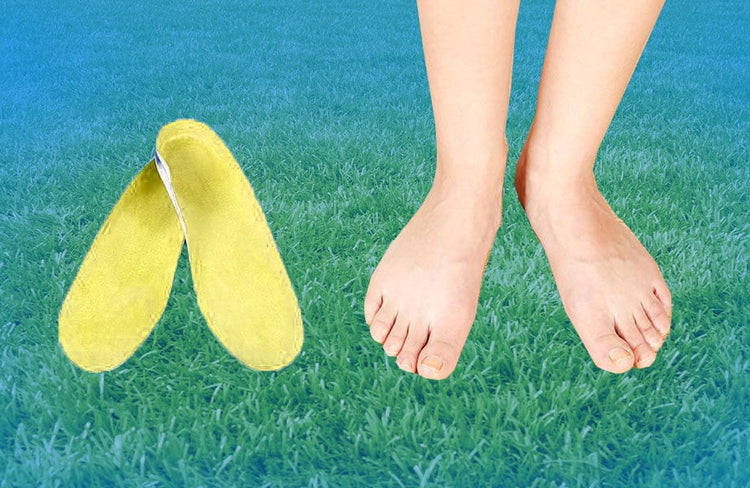
Orthotics vs. Barefoot Running
The only time I've worn anything other than my huaraches or my sprinting spikes in the last 16 months has been the 3 times I put on my old running shoes... so I could shovel snow. Those shoes have my $200 orthotics in them. And each time I've put them on, I have the same thought, "Geez, my foot can't even move. How did I wear these?" Often, when I'm out and about, someone will see my Xero Shoes and say, "Those look great, but I can't wear them. I need orthotics." "I used to think the same thing," I reply. "But let me ask you something. When has putting a cast on a limb and immobilizing it made it stronger?" "Well... never," they say, not wanting to admit the obvious fatal flaw in their reasoning. "Right. So you put a cast on your foot, called an orthotic, it gets weaker. Then you need a new cast to handle how much weaker you've gotten, and then... Oh, by the way," I mention, "you had your orthotic made while you were standing on a flat surface, didn't you?" "Yes." "Look at the shape of your shoe. Is it flat?" "Uh... no." "Because of how the shape of the shoe influences the way you move, you really need a different orthotic for each shoe. And it needs to be fitted based on how you move in that shoe, not how you stand, motionless, on the ground." "Hmmm..." I can see the glimmer of realization in their eyes. Well, now I have new ammunition in my anti-orthotic holster, an article in the New York Times by one of my favorite science writers, Gina Kolata: Close Look at Orthotics Raises a Welter of Doubts Let me give you a few highlights: Shoe inserts or orthotics may be helpful as a short-term solution, preventing injuries in some athletes. But it is not clear how to make inserts that work. The idea that they are supposed to correct mechanical-alignment problems does not hold up. Kinda sums it up, yes? Just wait, there's more. Gina interviews the top orthotics researcher, Benno M. Nigg, who says this about a man named Jason's flat feet: There is no need to “correct” a flat foot. All Jason needs to do is strengthen his foot and ankle muscles and then try running. without orthotics. Who knew? ;-) Well, *I* did... I've had really flat feet my whole life... until I started running and walking barefoot. Now I have some arch in my foot. BTW, I'm legally required to say that barefoot running shoes and sandals are not a medical treatment, I'm not a doctor, nor am I able to promise that by going without shoes you will develop arches in your feet. That said, do some Googling and you'll hear a lot of similar stories. Do with that what you will. Sometimes people with high arches give me the same story. "I need support because my arches are so high." Just because they're high, doesn't mean they're strong, especially if you've been supporting them all your life... remember the cast analogy. Now I'm not going to say that orthotics don't do something. But the question is: What do they do? How do they do it? And are they really helping? Dr. Joseph Hamill responds, in Gina's article: I guess the main thing to note is that, as biomechanists, we really do not know how orthotics work. Results from his studies cause Dr. Nigg to add: There was no way to predict the effect of a given orthotic. Hey, I'm not here to make anyone throw away their high-priced foot supports even though I haven't worn mine since 2009. But I am here to inspire a bit of wondering, a bit of curiosity, a bit of common sense, and a bit of critical thinking. Man lived without orthotics for a LOOOONG time. That doesn't mean they couldn't have benefited from them. But it means they got along without them. Maybe you can too. It doesn't cost much -- in time or dollars -- to set up an experiment for one. The content of this post does not constitute and is not intended to be a substitute for professional medical advice, diagnosis or treatment. Always seek the advice of a physician or other qualified health provider with any questions or concerns you may have about your health or a medical condition.
Can you really run in huaraches?
When you're used to hanging out with barefoot runners or, at least, with people who've read Born To Run, you forget how "normal people" think.One of the questions I'm most asked by non-barefoot people is: "Can you really run in those?"What amazes me about this question is not how people have forgotten that, for tens of thousands of years, this is exactly what humans wore to run. What amazes me is that I'm usually asked this question by someone who has been watching me run in my Xero Shoes.Silly humans.Well, don't just take my word for it, though.Check out this great race report by Alan Thwaits and see that, yes, you can run in these ;-)
What to do about the barefoot police?
Ever had a run-in with what some call "the barefoot police"? Ever feel like you need to give a little attention to your rebellious side?Then, you'll love the idea of making your Xero Shoes even MORE minimal!Check out: http://www.barefoot-healthy-blog.com/?p=248 to find out how.
Barefoot Jason does it again (but in style, this time)
Barefoot Jason Robillard has done it again, running 2/3 of a 100 mile race in his Xero Shoes.But this time, he's got some extra fashion sense added:Now, some of you may know that I'm a sprinter. In fact, I ran "long-distance" at a meet last week when I did my first 200m race (and, for the sake of bragging, even though I totally lost it at the end, my time of 25.7 ain't bad for a 48 year old... I think I can get below 24 with a bit of work).So, to read Jason's great post about training for and running an ultra was just amazing to me.Enjoy it here: Burning River 100 mile Endurance Race Report by Jason Robillard
Long distance running in huaraches
About once a week I get a call or an email from someone who asks, "Can you run in Xero Shoes for long runs?"I usually point out to them that the Tarahumara are known for running ultra-marathons in huaraches, so, Yes.But some people respond, "Sure, but I'm not a Tarahumara Indian."True (but not necessarily relevant).So, how bout a hometown boy who just ran in his Xero Shoes huaraches... for SIXTY-EIGHT MILES!Read the rest of the thread about his run in the archive of the Runners World Barefoot Running forum
Xero Shoes on Boomer Alley Radio
Got 7 minutes for some laughs?Then you'll enjoy the interview I was invited to do on Boomer Alley Radio's "Better Mousetrap" show.You can hear it online on Saturday or Sunday:Saturday July 10 7 pm Pacific Time streaming on kfwb.com and live on KFWB NEWS TALK 980 AM (Los Angeles)Sunday July 11 4 pm Mountain Time streaming on radioconetwork.com and live on AM 1060 in Boulder/Denver metroENJOY!-Stevenp.s. I'll try to get a copy and put it up here after it airs.


